Southwest Virginia 1776
To be a Virginian
either by Birth,
Marriage, Adoption,
or even on
one's Mother's side
is an Introduction to
any State in the Union,
a Passport to
any Foreign Country,
and a Benediction from Above
.........Anonymous
(William Faulkner?)
I spend a lot of time reading history. I am amazed at the number of unpublished memoirs I discover referenced online. If you have not checked out the VAWEBGEN pages you really should. The history resources there are amazing. Many counties are online and much of the info is not published material. Everything from history, census, and marriage records are available. One of my favorite things are unpublished memoirs. Here is a little of such a memoir by Emory L. Hamilton titled The Dreadful Year of 1776 on the Western Waters from the unpublished manuscript, Indian Atrocities Along the Clinch, Powell and Holston Rivers, pages 21-22.
The year 1775 had been a peaceful one along the western waters of Virginia, with not a single recorded incidence of Indian violence. This year of peace had been brought about by Lord Dunmore's War against the northern Indians with the end of the Point Pleasant Campaign. 1776 dawned with a fury of Indian depredations hitherto unknown from the Cherokees whose proximity to the western settlements made them a more formidable foe than the Shawnee, although the Shawnee attacks did not cease. The Revolutionary war was raging and the western settlers were faced with an enemy to the east, one to the south and another to the north, with British agents abetting and arming the hostile Indians, and in the midst were Tory traitors waiting and ready to strike.
Indian foraging parties, both large and small, were constantly prowling along the rivers and valleys of the Clinch, Holston and Powell Rivers. Not only were their sudden and unexpected appearances dangerous, but not knowing when and where they would strike next the settlers were forced to live in the forts the entire spring, summer and fall, thus preventing their growing any crops and suffering was perhaps more acute in this year than any along the western waters. Official records and contemporary writings of that time give an inkling of the situation on the frontiers in the many appeals for flour and ammunition which had to be sent in from the east by pack train and heavily guarded by troops through the dangerous gaps and valleys of Southwest Virginia.
In the spring all of Powell Valley had been evacuated (1) and the forts closed with the settlers moving into the forts further into the interior. The Battle of Long Island Flats (near Kingsport, TN) fought on July 20, 1776, and the Cherokee Campaign under Col. William Christian in the fall, somewhat relieved the dangerous situation, but not a single year passed from 1776, until the half-breed Chief Benge was killed in Wise County in 1794 without settlers along the frontier being killed and captured.
John Anderson of near Long Island, (Kingsport) Sullivan Co., TN, who settled there in the year 1773, sums up very well the frontier situation of 1776 in his unpublished memoir. (2)
The Cherokee Indians in the year 1776 came with a force of three or four hundred to within ten miles of my father's house before they were repulsed. (3) The spys came in great speed and the news was given. (We could) hear their voices and our men and boys (4) went out to meet them and they had sixteen or eighteen killed, and the number wounded not known. Our people had three wounded, none killed, notwithstanding we had 150 and the Indians more than double that number.
The author of these remarks recollects well to have seen, on the next day or two, after the battle, the scalps taken by some of our boys. He remembers to have seen one of the said scalps in the hands of a certain Mr. Moore, (5) who took it off himself. My father and his family was then in Shelby's Fort (near Bristol) where there was at that time, upwards of 100 families in Shelby's Fort. (6)
Immediately after the battle aforesaid the Indians traveled all over the country in small parties aiming to do us all the harm in their power. They killed a considerable quantity of people in different parts of the country that would venture out of the forts to get something to subsist no. After my father and his family had been at Shelby's Fort a number of days, we went back to Looney's Fort, (7) that being more convenient to our home than Shelby's Fort. We continued at Looney's until an army commanded by Col. Christian went against the Cherokee Nation. Shortly after the army passed our fort we moved home, and nearly all the families that was in said fort, which was a large quantity. Several men was killed there during the time we was forted and some wounded.
(1) Letter from Preston to Edmund Pendleton, June 20, 1776, Draper Mss 4 QQ 57.
(2) Mss written perhaps around 1840 by John Anderson and found about 1952 in the drawer of an old desk belonging to Anderson, and now in the possession of Miss Grace Denny of Bristol, a descendant.
(3) Reference to Battle of Long Island Flats, July 20, 1776.
(4) In many instances I find where 12 and 14 years old boys fought the Indians on the frontier and at King's Mountain also.
(5) A certain Mr. Moore, is Big Alex Moore. Draper Mss 14 DD 13, 15 DD 62, and 15 DD 26. Courtesy Gordon Aronhime, Bristol, VA.
(6) Draper Mss 4 QQ 61, Letter Col. William Preston to VA Council, says: "By a letter from Maj. Bledsoe, I find near 400 souls confined in a fort at Capt. Shelby's and no ammunition of consequence. Letter dated Fincastle, July 30, 1776." Courtesy Gordon Aronhime, Bristol, VA.
(7) Looney's Fort was the home of Moses Looney, on the Island Road, about one and one half miles from the mouth of Boozy Creek, on the North Fork of Reedy Creek, near Virginia line in Sullivan Co., TN
You can read the whole memoir here. I can only imagine the work that went into getting this online. Take time and see if a county, area, or subject you are interested in has a site listed. You wont be sorry! Check It Out.

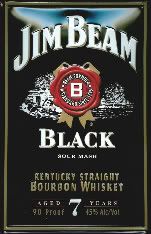

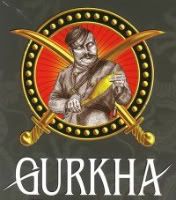

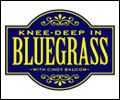











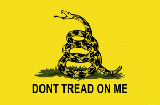





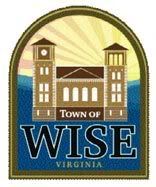



Comments on "Southwest Virginia 1776"
post a comment